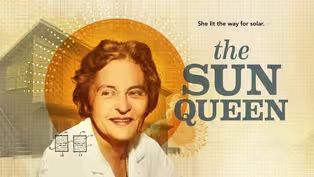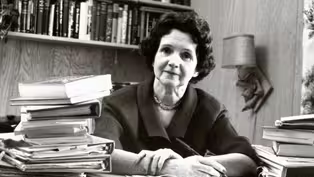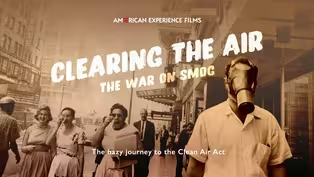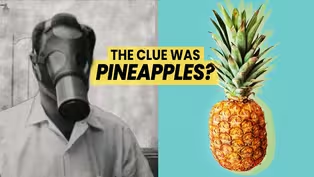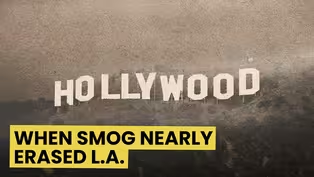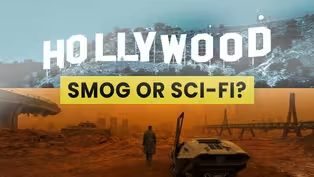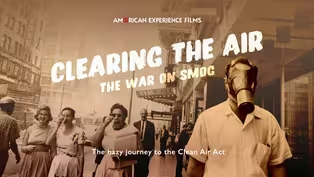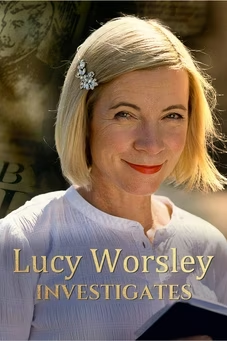
Clearing the Air: The War on Smog
Season 37 Episode 4 | 52m 39sVideo has Audio Description, Closed Captions
The story of L.A.’s noxious smog problem and the creation of the EPA and Clean Air Act.
In 1943, dark, smoky clouds enveloped Los Angeles, causing residents to complain of burning eyes, nausea, and difficulty breathing. The source of the smog was a mystery. CLEARING THE AIR: THE WAR ON SMOG is the story of the epic struggle for clean air, involving years of scientific study and civic pressure that would lead to the creation of the EPA and the Clean Air Act. From AMERICAN EXPERIENCE.
See all videos with Audio DescriptionADProblems playing video? | Closed Captioning Feedback
Problems playing video? | Closed Captioning Feedback
Corporate sponsorship for American Experience is provided by Liberty Mutual Insurance and Carlisle Companies. Major funding by the Alfred P. Sloan Foundation.

Clearing the Air: The War on Smog
Season 37 Episode 4 | 52m 39sVideo has Audio Description, Closed Captions
In 1943, dark, smoky clouds enveloped Los Angeles, causing residents to complain of burning eyes, nausea, and difficulty breathing. The source of the smog was a mystery. CLEARING THE AIR: THE WAR ON SMOG is the story of the epic struggle for clean air, involving years of scientific study and civic pressure that would lead to the creation of the EPA and the Clean Air Act. From AMERICAN EXPERIENCE.
See all videos with Audio DescriptionADProblems playing video? | Closed Captioning Feedback
How to Watch American Experience
American Experience is available to stream on pbs.org and the free PBS App, available on iPhone, Apple TV, Android TV, Android smartphones, Amazon Fire TV, Amazon Fire Tablet, Roku, Samsung Smart TV, and Vizio.
Buy Now
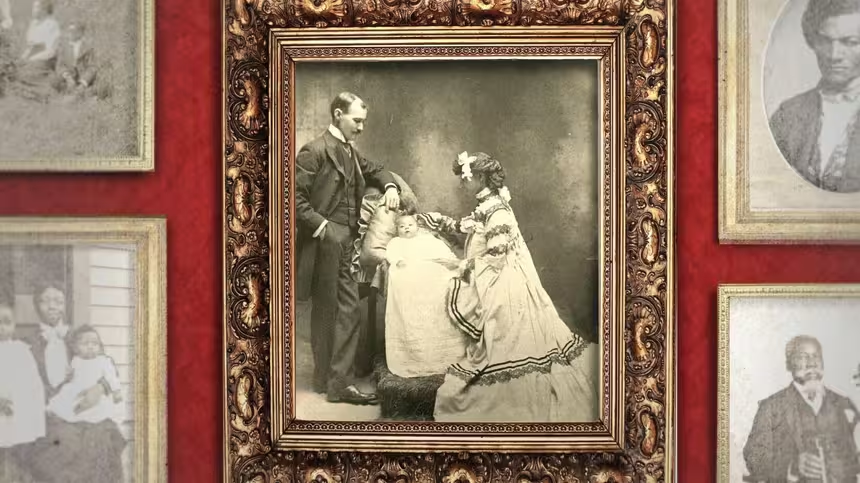
When is a photo an act of resistance?
For families that just decades earlier were torn apart by chattel slavery, being photographed together was proof of their resilience.Providing Support for PBS.org
Learn Moreabout PBS online sponsorshipMore from This Collection
Since pre-colonial times, Americans' relationship to the natural world has shaped politics, policy, commerce, entertainment and culture. In this collection, delve into our complicated history with the environment through American Experience films exploring wide-ranging topics, from our struggles to exert dominion over nature to our attempts to understand and protect it.
Poisoned Ground: The Tragedy at Love Canal
Video has Audio Description, Closed Captions
The story of housewives who led a grassroots movement to galvanize the Superfund Bill. (1h 52m 30s)
Video has Audio Description, Closed Captions
Unsung scientist Mária Telkes dedicated her career to harnessing the power of the sun. (52m 22s)
Video has Audio Description, Closed Captions
The woman whose groundbreaking books revolutionized our relationship to the natural world. (1h 53m 15s)
Providing Support for PBS.org
Learn Moreabout PBS online sponsorship♪ ♪ CHIP JACOBS: It's hard for us to imagine what it was like that day in July 1943.
It appeared quite suddenly.
CHRIS WELLS: Thick, dark, silvery-blue clouds descended over the city of Los Angeles.
People couldn't see across the street.
They were wondering what was going on.
ANN CARLSON: It was basically gas everywhere and you couldn't see more than a couple of blocks.
You couldn't see the buildings of downtown Los Angeles.
It was so bad that cars crashed, because you couldn't see the cars in front of you.
JACOBS: The "L.A. Times" would later call it a "Daylight Dim-out."
Sort of like a chemical eclipse happened.
It was like a dirty blanket thrown across the sky.
MUSTAFA SANTIAGO ALI: When folks came out of their house, their eyes began to sting, their throats began to burn, and they were trying to figure out, "Why is it that I can't breathe?"
♪ ♪ WELLS: There were lots of theories.
People thought that it might be a chemical attack by the Japanese.
This was in the middle of World War II.
There had actually been U-boat attacks on Santa Barbara, where submarines were shelling the oil fields.
It really freaked people out.
JACOBS: But within a few weeks, it was abundantly clear it wasn't the Japanese, it wasn't some German plot.
It was coming from within.
ALI: Residents had no idea, local governments had no idea what it was.
CARLSON: The solutions to the mystery would prove extraordinarily complicated and take decades of work.
♪ ♪ AFTON SLADE: We'd do some rather wild demonstrations with little children in gas masks.
We're tired of double-talk.
We're tired of mumbo-jumbo language.
JACOBS: It would revolutionize the auto industry.
A high school student would recognize this as a conspiracy.
MERLIN CHOWKWANYUN: It would bring together people from all kinds of ideological stripes with a common civic commitment to a common civic goal.
RONALD REAGAN: My fellow Californians, today, we lead the nation in the battle for cleaner air.
CARLSON: "We're going to set these standards "based on what's safe for the public, not on what's convenient for you to do."
RICHARD NIXON: The lives we spend in the future are going to be pollution-free.
MARY NICHOLS: What began in the Los Angeles of the 1940s and '50s would have a tremendous effect on the quality of air that we all breathe to this day.
(engine starts) FILM NARRATOR: In the years since the turn of the century, Los Angeles has grown from a sleepy pueblo to a vast, seething metropolitan city.
Fine buildings, huge stores, busy citizens.
A city which has grown faster than any other in America in the past decade and which sees a constant day-to-day influx of people from every part of the world.
CHOWKWANYUN: In the early 1940s, people are coming to Los Angeles for all kinds of reasons.
If there's one word people think about with Los Angeles during this time period, it's "boom."
In the 1940s, Los Angeles was Shangri-la.
It was a place where everybody wanted to go because of the beaches.
Movie stars.
(car horns honking) Hollywood.
(crowd cheering) WELLS: It also had a reputation as being a healthy place, and a number of people moved there specifically to take advantage of the beautiful weather.
FILM NARRATOR: Climate here is as close to perfect as it can be anywhere on Earth.
And, once here, the newcomer would rather be here than anywhere else.
The population tripled between 1920 and 1940.
Then it even almost doubled between 1940 and 1950.
ALI: We often see this golden sort of aura around Los Angeles in the 1940s.
But it doesn't have any real meaning if you have to wear a gas mask to walk down the street.
MAN: I've been a resident of this city for 12 years.
And brother, I can't take it anymore.
JACOBS: In 1943, there was a giant attack of air pollution, and people fled.
People freaked.
It was just the beginning of a generational nightmare.
Kids were told they couldn't play outside the schools.
This sort of a gray pall cast over the air.
The Los Angeles International Airport shut down because pilots couldn't see the runway, and it wasn't safe to fly.
People wheezing, people not being able to see clearly, to breathe clearly.
(car horns honking) No one knew what was going on.
People ended up in the hospital.
And the idea that living with air pollution was just L.A.'s future was not tolerable to people.
If this keeps up, I'm going to leave California for the sake of my children and myself.
ALI: Smog.
You combine both the words "smoke" and "fog," and they come together, and that's where the name comes from.
CHOWKWANYUN: After the 1943 incident, there's a number of recurring smog attacks.
CARLSON: So the local government actually created a Smoke and Fumes Commission to try to figure out, where is the smoke, where are the fumes coming from, and how do we stop them?
(train whistles blowing) CHOWKWANYUN: A lot of people start to suspect that industry might be a culprit.
CARLSON: Los Angeles was, maybe surprising to some, an industrial powerhouse.
It was one of the largest centers for manufacturing.
It produced and then refined much of the nation's oil, and there was a burgeoning defense industry because of the war.
(tools whirring, clanging) WELLS: In the 1940s, more than 5,000 new factories had opened for wartime production.
♪ ♪ CARLSON: The prevailing thought was that the culprit was a single factory, or maybe a couple of factories.
FILM NARRATOR: Outstanding among the coast's wartime production feats was a new U.S. industry created when the nation's main sources of rubber in the Far East fell into Japanese hands.
Centered in Los Angeles... CARLSON: There was a plant that manufactured a chemical called butadiene, which was used in making rubber for the war effort.
ALI: And that was the first place that they zeroed in, thinking, "This might be the cause of the smog."
JACOBS: They immediately said, "We have it under control.
We're going to retrofit this plant."
No scientific evidence.
They just assumed this would be the easy answer.
CARLSON: So the City of Los Angeles cracked down on the plant.
And that seemed to help for a little bit.
But within a matter of months, the smog problem was back.
It clearly wasn't just the one single factory.
Something else was causing the problem of smog.
♪ ♪ CHOWKWANYUN: Air pollution is not a problem that's unique to Los Angeles.
People, especially in the industrial cities during this time period, see a lot of smoke and fog.
In the 1940s, people start to say, "If you actually want to get rid of this thing, "you want to know what exact components are in it so that you can target those specific things."
CARLSON: So one of the things that Los Angeles did was to bring in an expert.
His name was Raymond Tucker, a scientist from the city of St. Louis.
He concluded that these big industrial facilities were the cause of the smog problem, and if you could just shut down those emissions, you could solve the problem.
WELLS: So he made a bunch of recommendations.
The most important was that they create some sort of air pollution control district that would be empowered to go issue citations and shut down sources of pollution that were problematic for the city.
♪ ♪ ERNEST DEBS: The people want to know, when are we going to solve the perplexing problem of eradicating our skies of smog?
It would seem to me that if drastic steps are needed, they must be taken!
CHOWKWANYUN: So, in 1947, Los Angeles County opens the Air Pollution Control District.
It's the first dedicated agency of its kind to regulating air pollution and emissions for a region in the entire country.
JACOBS: The first instinct was to militarize the effort.
WELLS: The job of these smoke inspectors literally was to go look at smokestacks, hold up something called a Ringelmann chart, which was a card that had different levels of gray on the card, and they would literally hold it up against the smoke.
And if it exceeded a certain level of darkness, then it would violate city ordinance, and they could do something about it.
(tires screeching) (siren blaring) CARLSON: Intuitively, it makes some sense, right?
The darker the smoke, the worse it probably is for you to breathe in.
But it wasn't exactly high-tech, sophisticated science.
A car smoking badly like this is a violation of the California Vehicle Code-- excessive smoke.
CARLSON: In its early years, the APCD gave out 1,400 citations both to vehicles and to factories.
Here you are.
But you know what?
The air didn't get cleaner.
We had different pollution problems than the pollution problems of the Midwest.
CHOWKWANYUN: There's something specific about the actual landscape of Los Angeles that makes smog worse.
CARLSON: Los Angeles is on the coast, but it's ringed on three sides by mountains.
So it's like a bowl, basically.
And those mountains can trap smog between them.
WELLS: On the other side of the mountains are deserts.
And so there's a lot of hot air that comes over the mountains this way.
CHOWKWANYUN: Normally, as you go up, the temperature decreases, it gets colder.
But in L.A., the conditions are inverted.
JACOBS: It's called a temperature inversion, when this cold air is pressed down by a layer of hot air.
Think of it like a cauldron lid.
ALI: So you have this sort of toxic soup that often is created underneath because it's trapped, and things can't escape.
WELLS: There are photos where you're looking at the upper half of City Hall, which is open and clear.
And then about halfway down, you just get a thick black cloud all the way down to the ground.
These temperature inversions in Los Angeles happen all the time.
Sometimes over 300 days per year.
(newsreel theme playing) NEWSREEL NARRATOR: A death-bringing fog settles over Pennsylvania's bustling industrial town of Donora.
Residents have difficulty in breathing the murky air as the town is plunged into darkness.
WELLS: In 1948, in the small industrial town of Donora, Pennsylvania, a temperature inversion of the variety that was normal in Los Angeles hit.
CARLSON: It was the worst air pollution attack in United States history.
A zinc factory actually emitted all kinds of pollutants, mostly sulfuric acid, that killed people immediately.
20 people died.
It was almost instantaneous.
People were choking in the streets.
JACOBS: It scared the living daylights out of the decision makers in L.A.
They viewed it very much as a preview of coming attractions.
Newspapers grabbed hold of the story, and it began to run wild across the country.
There was an immense amount of pressure from folks in Los Angeles to figure out what's going on here.
WELLS: The inversion in Donora prompted scientific investigation to try to figure out what was going on.
And the major breakthrough came from a surprising place.
♪ ♪ In the 1950s, the Dole Fruit Company was the world's largest producer of pineapples, and it had an interest in using a new chemical technique to understand better its big moneymaking product.
Could you replicate the flavors?
Could you make artificial flavors?
They are interested in what at the time was known as "better living through chemistry."
One of the most promising plant chemists at the time was Dr. Arie Haagen-Smit at Caltech in Pasadena.
And he's funded by pineapple growers.
WELLS: His specialty was isolating plant proteins.
And so they shipped him several tons of pineapple, which he distilled down into the essence, into a teaspoon, to, basically, to figure out all of the chemical explanations for why pineapples smell like pineapples.
CARLSON: Then he is recruited by the local chamber of commerce to serve on a scientific advisory committee.
Because it turns out that agriculture is really affected by smog.
And one of the things that gets him into studying what is happening to air quality in Southern California is that crops are dying, and they are desperate to figure out why.
JACOBS: Farmers were going bankrupt, looking at rows of dead plants.
It wiped out whole sectors of the economy.
CARLSON: He says, "Well, if you want to figure out why they're dying, you got to figure out what they're being exposed to."
NICHOLS: What Haagen-Smit did was to take actual air and deconstruct it to show what was making up the substance that was damaging leaves and plants.
WELLS: His initial approach to figuring out what was in the air was to use exactly the same processes that he'd used for pineapples.
He drew in about 500 cubic feet of air, about the amount that a typical person would breathe in a day, and then all of that got distilled down into just a few drops of really terrible-smelling brown liquid.
Distilled smog.
Haagen-Smit was able to study it at a molecular level, and one of the important findings was that this was not a sulfur problem, which was what had happened in Donora, Pennsylvania, and other industrial cities.
Actually, what he was finding was large concentrations of ozone.
We generally think of ozone as a good thing.
Like, when we're kids, we all learn about, you know, the quote-unquote "ozone layer."
But when ozone is close to the ground, it is not such a good thing.
It produces all kinds of unpleasant effects.
FILM NARRATOR: Ozone basically is a harmful form of oxygen formed in both the upper and lower atmospheres.
WELLS: What people knew was that ozone does, in fact, cause your eyes to get irritated and to tear up, and that if it was a large component of smog, then that would explain some of the particular unusual characteristics of smog in Los Angeles.
But it was a bit of a mystery, because there were no sources of ozone in Los Angeles.
This is not something that industrial factories just emit.
CARLSON: So something else is going on.
The other thing Dr. Haagen-Smit discovers when he analyzes the air is that there's a component in it that comes from petroleum: hydrocarbons.
ALI: Hydrocarbons are actually a part of fossil fuels, of gasoline.
When gasoline evaporates, it releases hydrocarbons into the air that combine with other chemicals.
CARLSON: But he discovers that smog is actually not just about the chemicals.
It's also about the sun.
It's the interaction of the hydrocarbons with a mix of chemicals in the air being exposed to the sun that creates ozone.
And of course, Southern California has sun in abundance.
WELLS: So the first thing he decided to do was to try to recreate smog in the laboratory.
REPORTER (in film): This device here, then, will, uh, recreate smog as we breathe it in Los Angeles.
Uh, that's right.
There's an abundance of, uh, ozone formed here in this air, and it reacts with, uh, gasoline.
And this, uh, this, then, that you're making will be, uh, what we're breathing today here in Pasadena.
That is a very good duplication of it.
REPORTER: Would you please continue, Doctor?
HAAGEN-SMIT: Yes, sure.
The hydrocarbons in the air form ozone in the sunlight.
And that is the beginning of our trouble.
Then we take some, uh, gasoline, and the vapors of the gasoline, you will see, react now with the ozone, and we get concentrated smog.
His great discovery is that the combination of the ozone, the hydrocarbons, and their exposure to sunshine creates ozone pollution.
Dr. Haagen-Smit calls this "photochemical smog."
He publishes the findings that he's come up with in analyzing Los Angeles air, and they're immediately controversial.
JACOBS: I don't think he appreciated how ferocious entrenched interests were, because not very long after he came out with his literally breathtaking discovery, the oil companies started coming after him.
The petroleum interests, Western Oil and Gas Association, don't want their product associated with Los Angeles smog because that's going to lead to efforts to try to do something about the problem.
They hire a research think tank called the Stanford Research Institute to try to undercut the findings that Dr. Haagen-Smit has made about the importance of petroleum in smog.
♪ ♪ FILM NARRATOR: Stanford Research Institute was commissioned to answer specifically two questions: what is smog and where does it come from?
In our initial... JACOBS: They hired researchers, experts, they created films that said, "Nobody is really sure what causes smog," despite Haagen-Smit's indestructible logic.
FILM NARRATOR: What's in this bottle?
Smog.
Pure, undiluted smog.
But what is smog?
Well, I don't know.
(creating different voices): Who makes it?
Why is it?
Where's it come from?
JACOBS: Their job was to create public doubt and confusion and flood the zone.
♪ ♪ And so it seeded and sowed doubt in the mind of the average Angeleno.
CARLSON: Arie Haagen-Smit feels his credibility and his scientific acumen are under attack.
And it makes him furious.
He decides, "I'm going to prove them wrong."
JACOBS: So he became a consultant to the Air Pollution Control District.
Its star consultant.
♪ ♪ CARLSON: Then, in October of 1954, there's a streak of smog that's so bad that "The New York Times" reports on it, people are up in arms about it, goes on for about two weeks.
JACOBS: It was one of the most grievous stretches of air pollution in recorded history.
WELLS: At this point, it was a decade past the first big smog events in Los Angeles, and that's a long time and a lot of effort to end up with a problem that only seems to be getting worse.
There was a crescendo of public anger.
And that crescendo erupted at Pasadena Civic Auditorium.
About 6,000 people were in the audience, and they were frothing at the mouth.
MAN (in film): Ladies and gentlemen, we have met here tonight unitedly for one purpose in mind-- to get some action...
It's affecting everybody!
It's poison!
Smog-- this is our only enemy!
If anyone anyplace tries to stop this effort to get rid of smog, we will definitely steamroll him flatter than a pancake!
(cheering and applauding) The politics of smog are becoming really, really important.
WELLS: "Life" magazine ran a big article about smog in the land of sunshine.
And the Optimists' Club in Los Angeles had a dinner where they donned World War II-style gas masks.
JACOBS: They had a big banner behind them saying, "Why wait for 1955?
We may not be alive."
Smog was such a deadly, scary topic that I think folks needed some relief and a giggle here and there.
TOM LEHRER (in accent): ♪ If you visit American city ♪ ♪ You will find it very pretty ♪ ♪ Just two things of which you must beware ♪ ♪ Don't drink the water and don't breathe the air ♪ JACOBS: As a publicity stunt, the L.A.
Zoo put goggles-- "smoggles," they called it-- on a donkey named Peaches.
There were smog towels.
There, there was fresh mountain air, and supposedly, if you were coughing on smog, you breathed in the fresh mountain air, and you're going to be all better.
LEHRER: ♪ Just go out for a breath of air ♪ ♪ And you'll be ready for Medicare ♪ ♪ The city streets are really quite a thrill ♪ ♪ If the hoods don't get you, the monoxide will ♪ ♪ Pollution, pollution, wear a gas mask and a veil ♪ ♪ Then you can breathe ♪ ♪ Long as you don't inhale ♪ ♪ They're drinking the water and breathing ♪ (coughs weakly): ♪ The air ♪ (audience applauding) JACOBS: The cynicism deepened, and so did the gallows humor.
But cynicism is a natural consequence of failure.
When people feel disenchanted or demoralized, they lash out.
They wanted politicians recalled.
They wanted regulators fired.
♪ ♪ CARLSON: So, Los Angeles decides that they need a new commissioner of the APCD, and they need a commissioner who's savvy about the public and savvy about public communications.
WELLS: The guy they chose was named S. Smith Griswold, who was, uh, an interesting character.
CARLSON: He is kind of straight out of Hollywood, in terms of his looks.
He's athletic, he's a former military guy.
All of us that live in Los Angeles realize that we have a smog problem.
Most of us realize-- most of you realize-- that we are really doing something about it.
CARLSON: He triples the staff, he dramatically increases the enforcement efforts.
He really wants to make a splash.
(motorcycle engine idling) ALI: This was a guy who really knew how to get attention.
♪ ♪ JACOBS: He volunteered to go into a smog chamber that Haagen-Smit had built.
♪ ♪ WELLS: He crawled inside and sat there for two hours, exposing himself to the artificial smog.
CARLSON: There's a lot of attention paid to it.
The "L.A. Times" covers it extensively.
WELLS: Afterwards, when he came out, he proclaimed that he had become listless and was clearly suffering from the effects of exposure.
So Griswold made a big show of changing the direction of the APCD.
But then he actually made a move that got people upset, which was to ask for individual sacrifice.
Miss Meecham?
How long have you been burning your rubbish in your incinerator?
How many years?
Well, ever since we've lived in California, about ten years.
And we burn early in the morning for a few minutes.
REPORTER: And has the smog gotten a great deal worse since, since you came to California?
In just the past few years, yes.
♪ ♪ CHOWKWANYUN: Back in the 1950s, the way a lot of people dealt with garbage was to burn it.
There were more than a million incinerators in Los Angeles being used at that time.
CARLSON: If you talk to anybody who grew up in Los Angeles in the 1940s and the 1950s, they remember taking the garbage out to the incinerator.
And of course, the incinerators generated ash and they generated smoke.
WELLS: And Griswold insisted that those be shut down.
Which was not something that people were particularly happy with.
JACOBS: A lot of Californians had a certain libertarian element to their personality.
You know, "Less government is better."
Many people were really opposed to making even minor changes in their life.
Folks, I was charcoal-broiling steaks like I've been doing for 14 years, and I was found guilty and given till November the first for sentencing of violation of smog control.
And folks, this could all happen to everybody in their backyards that charcoal-broil steaks.
(car horns honking) JACOBS: One of the freedoms that Californians cherished was the idea that every man's home is their castle.
Instead of going up into apartments and towers, it was being spread out in a urban sprawl.
♪ ♪ CHOWKWANYUN: Part of the appeal was the autonomy and independence of living on the West Coast in your own home and with your own vehicle that you yourself own, that you yourself control, that you yourself drove.
(engine revving) NICHOLS: Cars were tied to the influx of basically middle-class lifestyles.
And L.A. became synonymous with car culture.
♪ ♪ WELLS: L.A. accounted for something like five percent of all cars in the United States, which is a, a huge number for one city.
♪ ♪ FILM NARRATOR: This is the American dream of freedom on wheels.
An automotive age, traveling on time-saving superhighways.
JACOBS: The county adopted a master plan of freeways, the biggest freeway network anyplace, hundreds and hundreds of miles.
Between 1940 and 1955, the number of automobiles increases in Los Angeles County from one million to 2.5 million.
That's a lot.
(car horns honking) NICHOLS: There was a great deal more traffic, and more obvious presence of vehicles than there had been before, and I think that began to draw people's attention to what these things were doing.
(truck horn blaring) CARLSON: So, Haagen-Smit really begins to focus on the obvious culprit that has yet to be regulated, and that's the automobile.
And he is the one who discovers that what's coming out of automobiles is what's causing our smog problem.
The smog in Los Angeles is caused by the release of many chemicals.
And, uh, main source, however, is the release of tremendous quantities of hydrocarbons.
The hydrocarbons, they are emitted to the air through the exhaust of the automobile.
(horns honking) CHOWKWANYUN: And so the APCD thinks, "Hey, if hydrocarbons are a central part of the smog story, we're going to have to go after automobiles."
(horns honking) ALI: At this time, an organization was created, one of the early grassroots environmental organizations, by a set of ladies in Beverly Hills.
Their organization was called S.O.S.
: Stamp Out Smog.
We started with nine women, actually, who went down to see Smith Griswold, and we found out that they wanted backing, they wanted... CARLSON: It was founded by a bunch of unbelievably talented women who, because of the era, weren't employed outside of the home, who took care of their kids, and who were enraged about smog.
JACOBS: Margaret Levee's husband was a movie producer.
She also had a two-year-old daughter that had really bad asthma.
The doctor advised her to leave Los Angeles because of the air quality.
And her response was to say, "No, this is crazy.
"I'm going to stay here and I'm going to fight and I'm going to do something about it."
♪ ♪ They brought their kids frequently to meetings wearing gas masks.
♪ ♪ They became a political force that put more pressure on politicians to do something about the problem of smog.
ALI: Social media didn't exist at that time, but they were able to use phone trees, they were able to use letter-writing campaigns to reach out to politicians to say, "We have to do something."
♪ ♪ CARLSON: They joined forces with something like 400-plus organizations.
♪ ♪ They gained so much expertise that they actually had credibility to comment about things like technologies that could actually help address the smog problem.
♪ ♪ SLADE: We began to be recognized as the informed voice of the community.
And gradually, we were called upon to testify at the state level in Sacramento.
Even at the federal level.
Margee went to Washington to testify.
NICHOLS: Stamp Out Smog was channeling the anger of citizens against what they were experiencing.
And they wanted the auto industry to clean up these smoking vehicles.
Good morning, Mr. Fitzgerald!
Morning, Brownie.
Guess you'd better fill 'er up.
Yes, sir.
♪ ♪ CARLSON: But one of the first things that the auto companies did is, they simply denied that their product caused any problems.
And they ignored research from Arie Haagen-Smit.
CHOWKWANYUN: So it's clear somebody should go after something that has been ignored as one of the key culprits, and that's automobiles and the automobile industry.
If it's necessary to step on someone's toes or some industry's toes to crack down, to clean this air pollution problem, I want to do it.
JACOBS: Ken Hahn turned out to be a very influential political figure in the L.A. smog fight.
In fact, maybe the most influential.
CARLSON: He served on the Los Angeles County Board of Supervisors.
And he worked with Smith Griswold to fight the smog problem.
(horns honking) CHOWKWANYUN: Kenneth Hahn takes the identification of hydrocarbons as the key element in smog.
A scientific finding that might have just sat in a journal he actually translated into some kind of action.
JACOBS: He helped invite the representatives of the car companies to Los Angeles in 1954.
CHOWKWANYUN: Hahn and Griswold say, "You know, "you got to control the amount of hydrocarbons "that are coming out of your car.
You got to kind of create some sort of device."
And the car companies say, "Look, yes, we're going to have it ready in a few years."
JACOBS: But the carmakers didn't seem to be doing anything.
And Hahn was the first to call their BS and say, "Time is going by.
Smog is getting worse-- people are dying."
♪ ♪ SINGERS: ♪ The GM Five ♪ ♪ For '58, they're great ♪ ♪ They rate as best that you'll drive ♪ JACOBS: GM was King Kong.
It dominated the landscape.
SINGERS: ♪ Chevrolet ♪ ♪ ♪ ♪ Pontiac ♪ ♪ ♪ ♪ Oldsmobile ♪ WELLS: It was the biggest corporation in the world, it was the first to break the billion-dollar mark.
It had more than half of the auto market.
NICHOLS: And General Motors was invested in some of everything.
This model shows how tetraethyl lead and dye is added to the gasoline.
JACOBS: GM even owned and patented tetraethyl lead, which made gasoline more powerful.
But as we all know today, lead is extremely dangerous.
It's a, it's a neurotoxin.
(engine starts) WELLS: But tetraethyl lead increased the power that engines could have.
And because General Motors had a 50% ownership stake, even when all of their competitors were out on the road burning gasoline, driving around, General Motors was making money.
JACOBS: Because it was so big and powerful, you're not going to beat a industry like the car makers without some big guns on your side.
And the only way to do that was to take it up to the state level.
CARLSON: So, in 1960, California becomes the first state in the country, the first jurisdiction anywhere, that is trying to control the pollution that comes out of the tailpipes of vehicles.
They want to mandate exhaust control equipment on vehicles.
What do the auto manufacturers do?
They say it doesn't exist.
JACOBS: But in fact, the car companies were aware of a rather simple device that had been around for a while.
That could be the answer to many of the problems.
CARLSON: Eugene Houdry, a scientist from Pennsylvania, had invented a pretty early prototype for the catalytic converter.
♪ ♪ WELLS: Essentially, what a catalytic converter does is, it takes harmful unburned hydrocarbons and forces them through a chemical reorientation so they won't turn into smog.
CARLSON: In the 1950s, GM actually tests it.
But the problem with catalytic technology is that leaded gas corrodes it-- it ruins it.
WELLS: So, trying to take the lead out of gas was not particularly attractive for automakers, because they had built the engines around the higher performance that leaded gas provided.
♪ ♪ The automakers had formed a joint commission where they had agreed to share all of their emission control innovations with one another.
They claim that this committee is designed to pool their resources, to research and come up with technology that can cut pollution.
WELLS: This is the era of convertibles and tailfins and sofa-width seats and two-tone paint jobs.
ALI: They continue to push out newer models year after year after year.
But when it came to addressing emissions, they were more resistant to making those changes.
♪ ♪ JACOBS: For ten, 15 years, they did nothing.
They did not develop an exhaust control device, even though they promised that they would.
CHOWKWANYUN: So, Kenneth Hahn writes hundreds of letters saying, "Hey, what is going on?
"Where is the device?
What's the progress?"
♪ ♪ CARLSON: The big auto manufacturers, they don't want to really acknowledge the problem, let alone do anything about it.
JACOBS: So Griswold and Hahn said, "You know what?
Time to take the offensive even further."
CARLSON: Supervisor Hahn persuades the United States Department of Justice to investigate the auto manufacturers for antitrust violations.
♪ ♪ WELLS: What the lawsuit alleged was that instead of cooperating to push forward a solution more quickly, the automakers were using their collaboration to suppress any actual progress on emissions.
And this was a... A high school student would recognize this as a conspiracy.
WELLS: In 1969, the Nixon administration decided to settle the lawsuit that Los Angeles had brought against the automakers with something called a consent decree.
HAHN (in film): Which in effect allowed General Motors, Ford, and Chrysler not to stand trial in an open courtroom for conspiracy charges of violating the Sherman and Clayton antitrust laws.
No individual is criminally indicted or prosecuted.
They simply agree to stop the conspiracy.
WELLS: All of the grand jury testimony was sealed, which means that you couldn't use it to sue the automakers for damages.
CARLSON: But the conspiracy case had demonstrated pretty clearly that the auto manufacturers' cries about what they could or couldn't do weren't true.
So the auto manufacturers had undermined their own credibility in California.
WELLS: That meant Hahn and Griswold really ratcheting things up to another level, using the power of the state to try to get what they wanted.
My fellow Californians, the war on smog began here in California.
Today, we lead the nation in the battle for cleaner air.
But we still will not be satisfied until we can return blue skies and a clear atmosphere to our state.
(crowd cheering) CARLSON: Ronald Reagan was governor of California.
Later, he would run for president on an anti-environmental agenda.
But as governor, he was supportive of California fighting air pollution efforts, in part because air pollution was ugly and dirty and his constituents hated it.
He was not known in any way as being a leader on the environment, but he was a practical politician.
So, in 1967, Reagan created the California Air Resources Board, which is known as CARB now to most people.
FILM NARRATOR: Chairman of the board is Dr. Arie J. Haagen-Smit, professor at the California Institute of Technology in Pasadena, the scientist who discovered the causes and nature of photochemical smog.
NICHOLS: CARB created a system of testing where every make and model that a company wanted to sell in California had to get certified.
And if the car didn't pass that test, it could not be sold in California.
REPORTER: ...have, uh, gotten into trouble trying to sell cars in California?
For not complying with the law?
Uh, yes, certainly.
There was, uh...
This year, one of the companies had not supplied us with the information, and then I had no other choice as, uh, holding up the sale of the, um, the, the cars.
CARLSON: And at the same time California is stepping in to begin to regulate emissions from vehicles, we have a burgeoning environmental movement in the United States.
♪ ♪ ALI: As we move through the '60s, folks are becoming more aware of how important it is to have a cleaner environment, to make sure that you have cleaner air to breathe.
(audience applauding) SALLY EATON: ♪ Welcome, sulfur dioxide ♪ ♪ Hello, carbon monoxide ♪ WELLS: And in April of 1970 was the first Earth Day, which was the single largest protest in American history.
(crowd cheering, band playing) CARLSON: 20 million people gathered in various events around the country to demand that Congress do something to protect the environment.
Politicians listened.
The great question of the '70s is, shall we surrender to our surroundings, or shall we make our peace with nature and begin to make reparations for the damage we have done to our air, to our land, and to our water?
CHOWKWANYUN: When you hear Richard Nixon, you don't normally think public health hero, but he passes some of the, the most robust-- still-- federal laws that constrain pollution.
His advisers-- who, by the way, were Southern Californians-- um, told him that this was something he had to do.
The lives we spend there, in the future, motorist and pedestrian, are going to be pollution-free.
People were so disturbed by the way we had degraded the environment that it became an issue that no politician could ignore.
♪ ♪ So in December of 1970, Nixon established the Environmental Protection Agency.
And just a few weeks after the creation of the Environmental Protection Agency, the 1970 Clean Air Act became the law of the land.
CARLSON: The Clean Air Act is the strongest environmental bill Congress has ever passed.
NICHOLS: The idea of creating a system in which standards were set based on what an expert agency thought was technically feasible began in the Los Angeles of the 1940s and '50s.
CARLSON: California set the first air-quality standards, and then the federal government followed suit.
California set the first requirements for controlling exhaust emissions.
The federal government then just starts getting into the business of regulating emissions from automobiles.
NIXON: The automobile is our worst polluter of the air.
Adequate control requires further advances in engine design and fuel composition.
We shall intensify our research, set increasingly strict standards, and strengthen enforcement procedures, and we shall do it now.
CARLSON: They tell car companies that they need to cut pollutants by 90% by 1975.
All of a sudden, manufacturers are being told, "We don't care how you do it.
"We're going to give you a super-tight deadline, "and you're going to figure out the technology.
"We're going to set these standards "based on what's safe for the public, not on what's convenient for you to do."
That was a sea change in how we thought about regulation.
Will the auto manufacturers be able to meet the pollution guides set forth for them in the next four years?
What is General Motors doing?
We believe we'll have to use a catalyst or two catalysts to meet the emission levels for 1975 and '76.
One kind of catalyst... CARLSON: And in that way, the Clean Air Act led to the catalytic converter.
NICHOLS: It wasn't mandated, but in effect, it was mandated, because it was the only technology that was available that would meet the strictest new emission standards.
(engine revving) CARLSON: But remember, the catalytic converter had to operate with unleaded gasoline.
So, one of the first things that the Environmental Protection Agency did was to require that unleaded gasoline be available at every gas station.
WELLS: But once you took lead out of gas, it meant you had to reconfigure the engines themselves.
CARLSON: Car companies said it was impossible.
Auto manufacturers are actually testifying to Congress that if the law is passed, they will go out of business, and Congress, on a bipartisan basis, ignores them and passes the statute.
ANNOUNCER: For good mileage in your AMX... ...now there's Shell of the Future!
Made with no lead at all.
NICHOLS: The bottom line for industry was that this allowed the engineers to retune the engines for better fuel economy and better performance.
And in fact, it clearly, uh, made the industry more profitable, rather than less profitable.
CARLSON: Catalytic technology is now standard on vehicles around the world.
Lead in the air we breathe in the 1960s was 50 times higher than it was after we banned lead in gasoline.
And it's even lower today.
NICHOLS: Today, we have over two-and-a-half times as many cars in the Los Angeles Basin as we did back when the smog was so bad, and the levels of pollution from those cars is less than one percent of what it was.
CARLSON: There's still a lot of work we need to do to clean up ozone.
Los Angeles continues to have a big air pollution problem, but it's really important to stress that it's orders of magnitude better than what it was.
Los Angeles has not had a smog alert since 2003, which just tells you everything you want to know.
WELLS: The fact that figures like Reagan and Nixon were both deeply involved shows us that environmental questions weren't partisan.
There was broad public buy-in that quality-of-life issues were as important as economic issues.
Air pollution was not a cause of just environmentalists or activists or angry residents.
It was county officials, different factions of the business community, scientists.
JACOBS: The L.A. smog story is a tale of tenacity, perseverance, ingenuity, some political craftsmanship.
It took licking a problem some people thought was unsolvable.
It went on for 25, 30 years.
But L.A. very much changed the world.
♪ ♪ ♪ ♪ ♪ ♪ ANNOUNCER: "American Experience: Clearing the Air: The War on Smog" is available with PBS Passport and on Amazon Prime Video.
♪ ♪ ♪ ♪
Chapter 1 | Clearing the Air: The War on Smog
Video has Closed Captions
Clip: S37 Ep4 | 8m 41s | Watch a preview of Clearing the Air: The War on Smog. (8m 41s)
The mystery of L.A.’s smog revealed
Video has Closed Captions
Clip: S37 Ep4 | 4m 58s | The major breakthrough in understanding L.A.'s deadly smog came from a surprising place. (4m 58s)
The Secret Hollywood Campaign to Clean L.A'.s Air
Video has Closed Captions
Clip: S37 Ep4 | 4m 57s | When smog issue plagued their city in the mid 20th century, Angelenos got creative. (4m 57s)
Smog on the Big Screen from Blade Runner to Godzilla
Video has Closed Captions
Clip: S37 Ep4 | 4m 34s | How has L.A.'s history of smog shown up on the big screen? (4m 34s)
Trailer | Clearing the Air: The War on Smog
Video has Closed Captions
Preview: S37 Ep4 | 2m 22s | Watch a preview of Clearing the Air: The War on Smog. (2m 22s)
Providing Support for PBS.org
Learn Moreabout PBS online sponsorshipSupport for PBS provided by:
Corporate sponsorship for American Experience is provided by Liberty Mutual Insurance and Carlisle Companies. Major funding by the Alfred P. Sloan Foundation.



